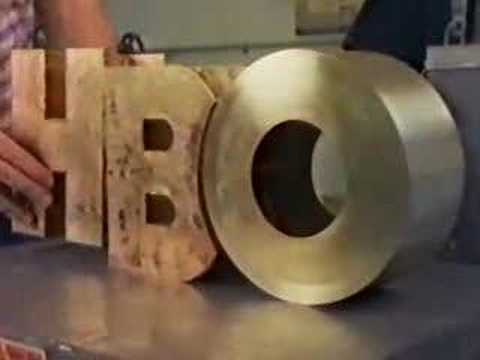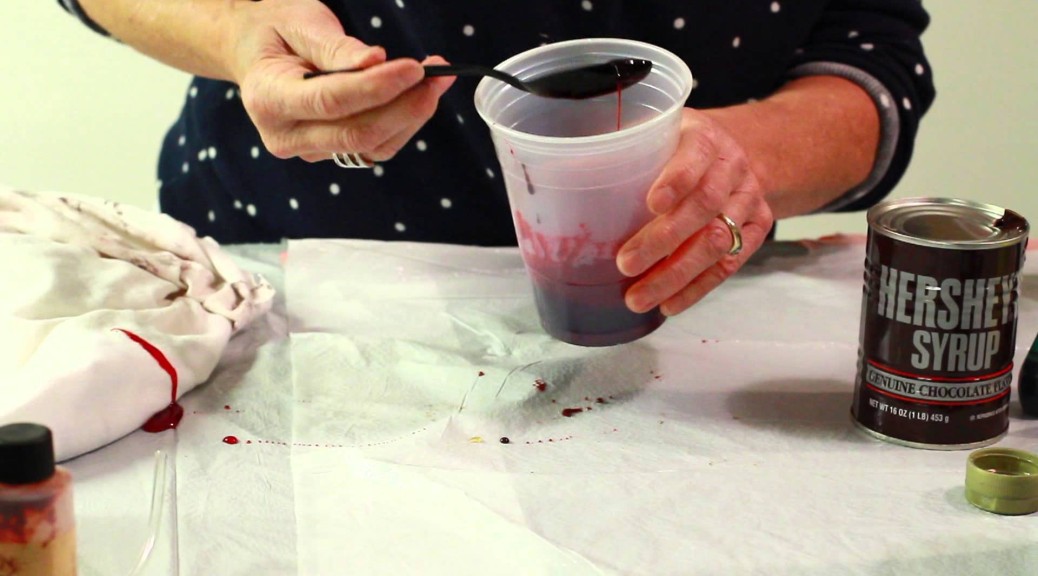If you have ten minutes, you should check out this video showing the creation of HBO’s intro sequence from the early 1980s. The video is from 1983 as well, and has a great vintage feel. It is fascinating to see the creation of one of the largest scale model cityscapes at the time. Props people are sure to recognize many of the techniques used by these model makers (though the three-month time frame they had to build it seems luxurious for most of us). The creation of the rest of the effects are interesting as well. While this occurred in the heyday of motion-controlled cameras, those were the only systems using computers. Everything else was created by hand, and every effect was achieved with an analog solution.
Tag Archives: effects
All Props Day
So it’s the day after Halloween, but most of my links today are for Halloween-related props, because that’s what everyone has been writing about for the last couple of weeks. Luckily, us props people can use some good fake blood advice any day of the year.
First up is fellow SPAM member Deb Morgan, props master at the Lyric Opera in Kansas City, showing us how to make some fake edible blood and a blood bag. It’s a basic recipe that most of us know, but it’s great to watch how the different ingredients affect the final product.
Next is another SPAM member Seán McArdle giving his local Fox News channel a show-and-tell of fantastic props he has built. Besides his own take on the blood bag, he’s got a really cool non-pyrotechnic gunshot effect for a musket.
Ed Edmunds makes monsters and effects for haunted houses, and created the animatronic electric chair prop that essentially transformed these rides from cheesy diversions to high-tech affairs. Check out his interview in Esquire Magazine to learn more.
Finally, check out this super-cool video where artist DiResta makes a quick vacuum-formed mask, going from clay sculpt, to plaster mold, to vacuum-forming, to paint:
End-of-the-week Links
Well, I am off this weekend to Bucknell University, where I will be signing copies of my book during Homecoming Weekend. If you are in Central Pennsylvania, feel free to stop on by. I’ll try to post pictures and updates on my Twitter. I also have some stories I’ve found around the Internet this week:
Props master extraordinaire Jim Guy is profiled in yet another news article. He talks about how he got started, his favorite parts of the job, and how new people can begin a career in props.
LiveScience takes a look at the technology behind horror-movie monsters. Though it seems a lot of films just use CGI for everything, many effects are still practical. In fact, advances in technology have made it easier to use all sorts of prosthetic, animatronic and makeup effects for movies.
While we’re on monsters (it is nearly Halloween, after all), I enjoyed this article on a Philippine monster-making company. Their creatures are actually based on the characters from Philippine folklore, but done in a more-Western style.
The Credits talks with the makeup maestro for the new Carrie film. They discuss in detail how they did the infamous “pouring of blood” scene; it’s a little trickier than you might expect, but it led to a much more consistent result on-screen.
Finally, Non-Toxic Kids lays out ten reasons we need stronger laws about toxic chemicals. Though aimed at parents, the reasons are just as relevant to props people. While we may feel adequately informed about the dangers of industrial chemicals and supplies, we also use plenty of household cleaners and chemicals that you may not realize are also toxic.
All the Props Links
I have a new article up in this month’s issue of Stage Directions. I break down how we pulled off a fake knife-throwing trick for Triad Stage’s production of Wait Until Dark. Old pros know this trick, but it is always helpful to see a working model in action.
Fake ‘n Bake is back! Anna brings us a guest post by Ariel Lauryn on how to make a roast beef sandwich. There’s lots of pieces and parts that come together into a great prop which she built at one of my favorite puppet companies, The Puppet Kitchen.
Stagebitz has a great interview up with Gary of Twin FX. This UK-based effects and animatronics company has built everything from fire-breathing dragons to fifteen-foot-tall moving gorillas. What’s even more amazing is they build all of this for the stage, where it has to perform smoothly night after night, for years on end.
First Stage, a dynamite children’s theatre company in Milwaukee, is doing Shrek: The Musical. They show off how they make the ogre face, starting from taking a life-cast of the actor’s head, to sculpting and casting the prosthetic pieces he will wear.
Midsummer Links Dreams
It’s opening weekend here at the Santa Fe Opera! Two of our five operas open, the first tonight, the second tomorrow. It has been quite the hectic schedule, and we still have three more operas to open before July is out. Nonetheless, there is always time to read fun articles about props; here are a few that came out this week:
In “The Art of Animatronics: How Old School Movie Magic Compliments CGI“, Jim Nash looks at how practical effects are still being used despite the pervasiveness of computer-generated imagery. He points out how the technology that controls animatronics has gotten more sophisticated over the years, and how practical effects can sometimes be preferred for budgetary reasons. And the article has pictures of dinosaurs.
As if to reiterate the points in the previous article, the Stan Winston School blog has an article about the making of the Spinosaur for Jurassic Park III. Even with the advances in CGI since the first Jurassic Park movie, the third one still built a 12-ton, 1000-horsepower “puppet” version of the Spinosaur for many of the scenes. The iconic fight scene between the Spinosaur and the Tyrannosaurus Rex was mostly achieved by having several tons of robots crashing into each other. CGI simply enhanced it.
For a step back in time, Tested has a great article on the robot shark technology in Jaws. The mechanical shark in that film arguably ushered in the age of animatronic creature movies through the 80s and 90s. It’s a great look at how the shark was made, with some nice photographs as well (it looks like the shape of the shark was achieved with plywood!).
Whew, that’s a lot of articles about animatronics for a props blog! How about something a little more prop-related: the Dremel. Make Magazine has ten tips for Dremels and rotary tools.


